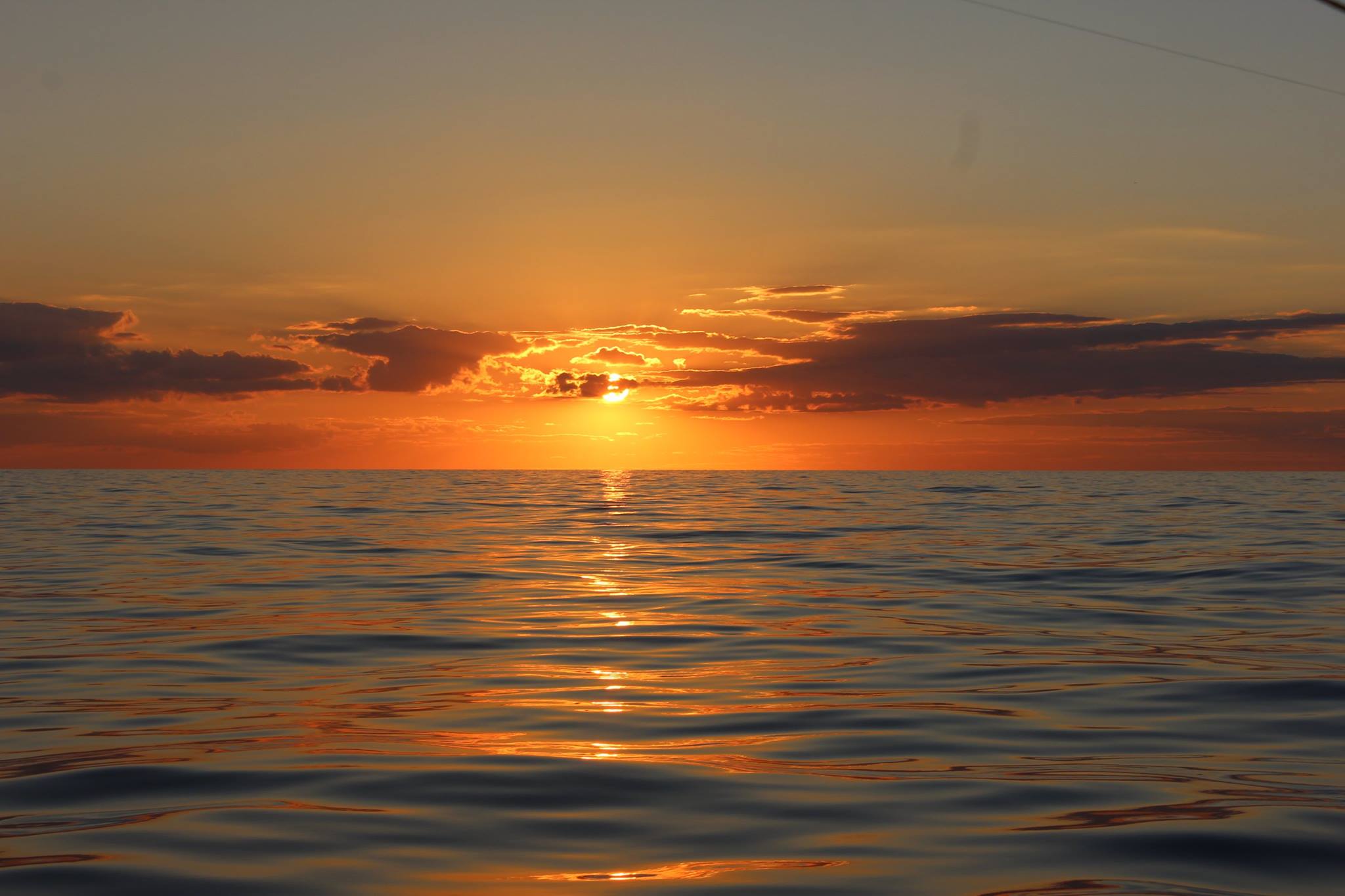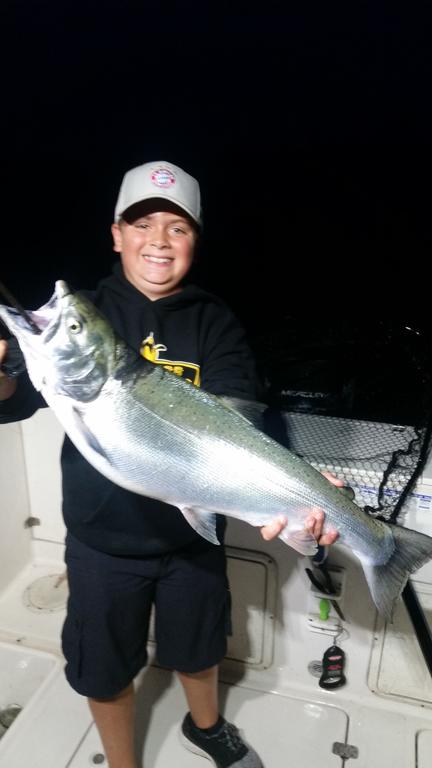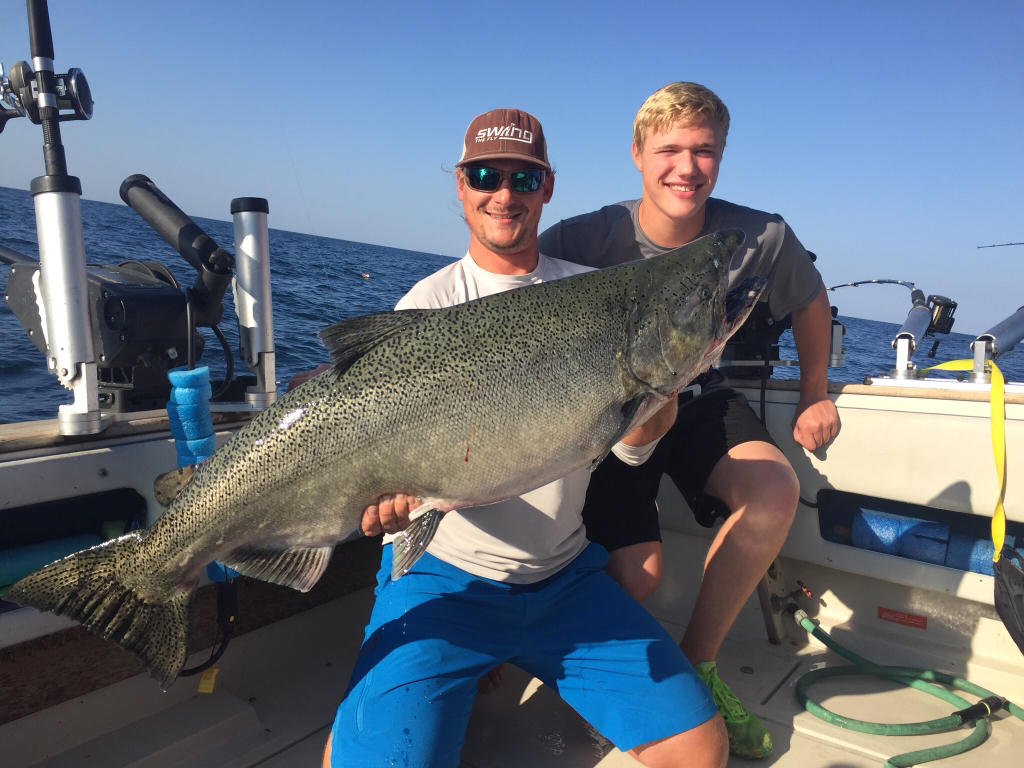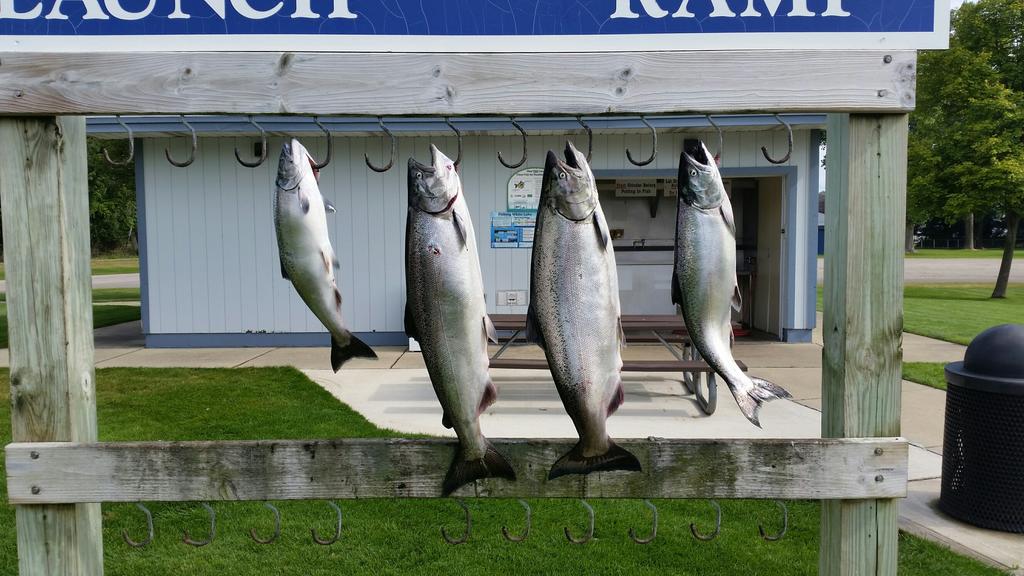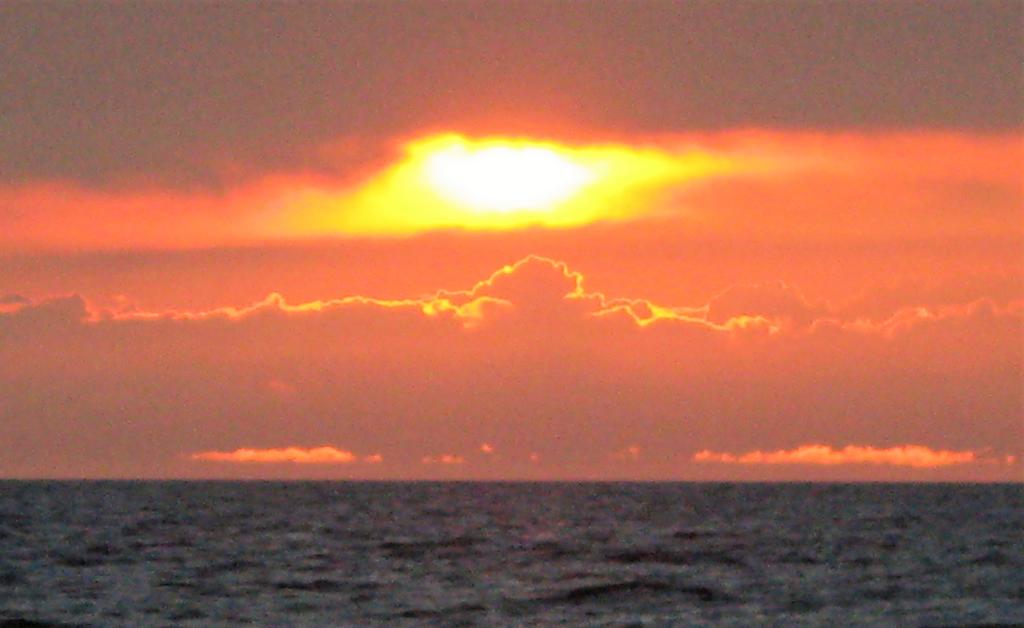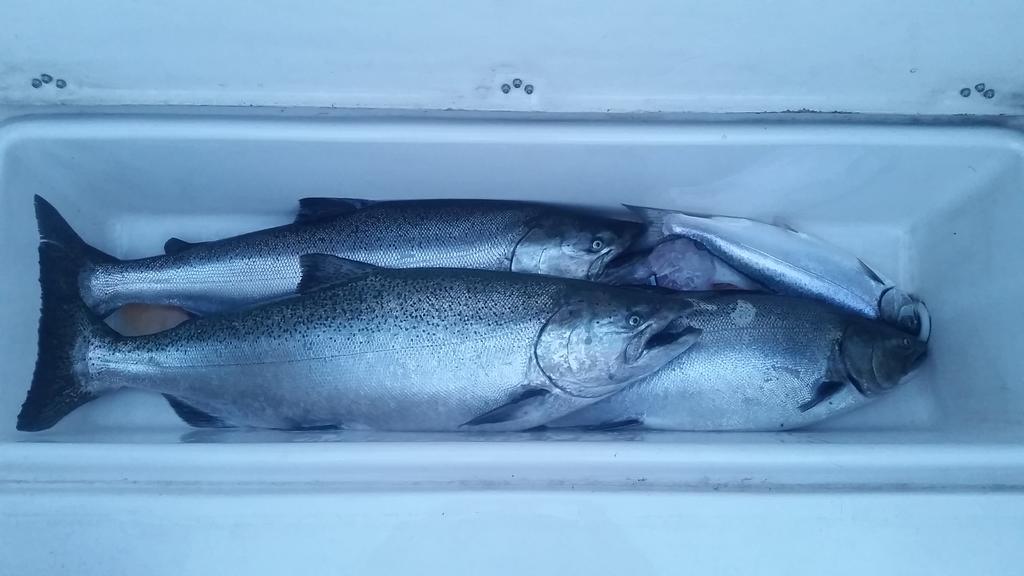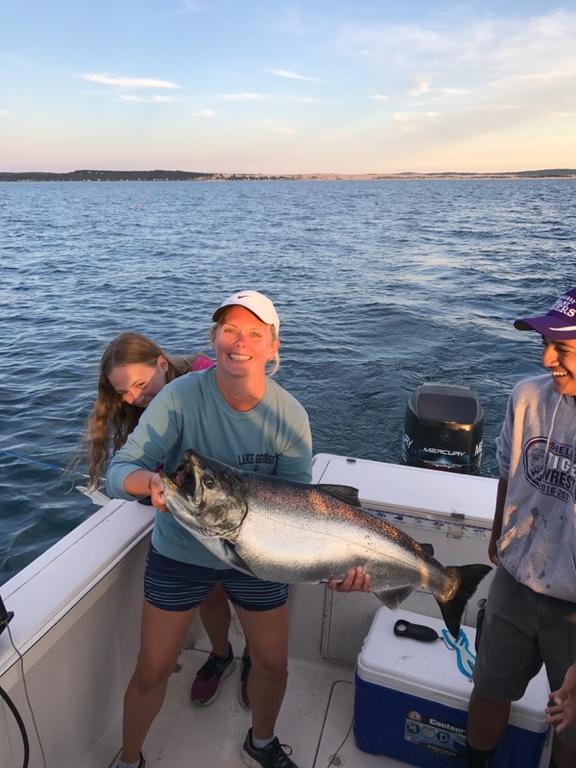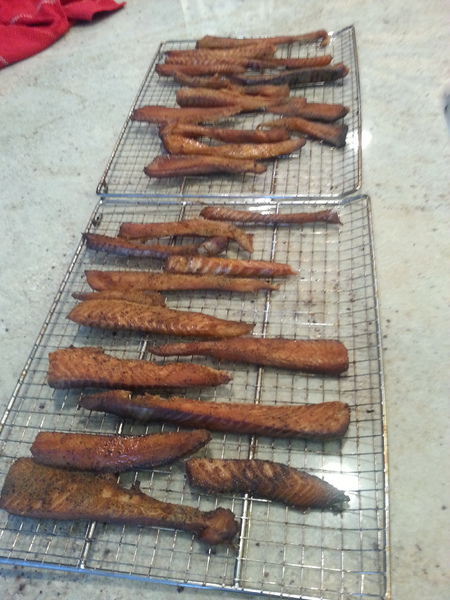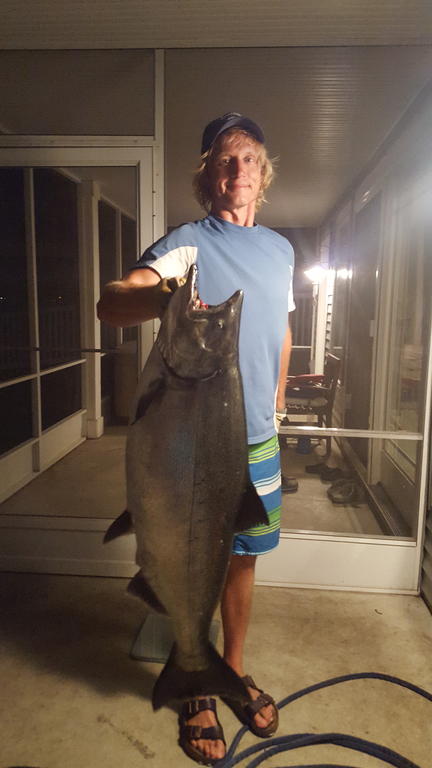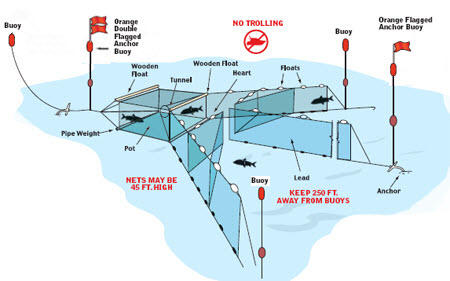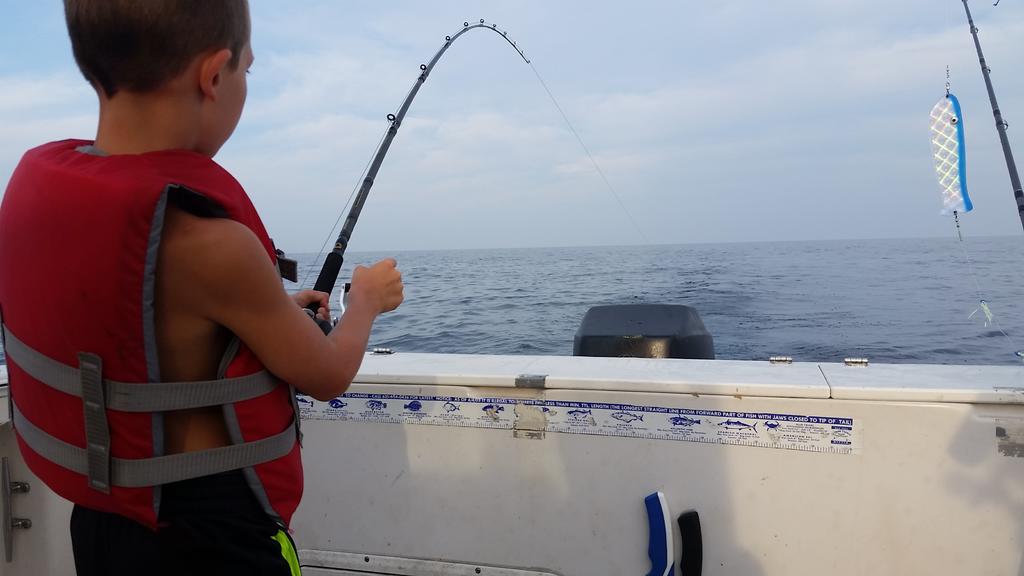-
Posts
608 -
Joined
-
Last visited
Content Type
Profiles
Forums
Events
Store
Gallery
Everything posted by Mega Byte
-
Eclipse fishing... I'm just sitting here, realizing the waves on the lake are under a foot. What a perfect day to fish all day. Plus, with a solar eclipse, who knows what that will do to the bite between 2 PM and 3 PM. I suppose you can say this most days, but today especially, I think I'd rather be fishing.
-
- 1
-

-

Ludington 8-19 pm
Mega Byte replied to FBD's topic in Michigan Waters Fishing Reports - Salmon and Trout
Lol Sent from my SAMSUNG-SM-G870A using Great Lakes Fisherman Mobile App -
Short trip as the kids got queasy in the 1.5 - 2 footers. Fished 4:30 pm to 6:30 pm. Speed 2.4 - 2.7 @ ball. 160 to 170 was a good depth. White paddle and pickled sunshine fly down 75 on a rigger took a hit. Green & silver spin doc and meat on a braid diver down 60' had a real nice fish on. Got off when he tangled with the 200 Cu. 200 Cu+Pb with a Ace Hi glow green plug took a 10# coho. That setup has taken several coho on my last 3 trips. Hits were on a N/NE troll. Sent from my SAMSUNG-SM-G870A using Great Lakes Fisherman Mobile App
-
- 3
-

-

Port Sheldon 8/15 am
Mega Byte replied to OuttaTheWoods's topic in Michigan Waters Fishing Reports - Salmon and Trout
Nice box of fish! I just can't get my old white paddle and fly to fire. I've ended up taking it out of the spread part way through my last two trips. It hasn't taken a hit for me in four trips. Glad to hear they still work! Sent from my SAMSUNG-SM-G870A using Great Lakes Fisherman Mobile App -

Pentwater 8/16 PM, 3-4
Mega Byte replied to Mega Byte's topic in Michigan Waters Fishing Reports - Salmon and Trout
-
Pentwater 8/16 PM, 3-4 We started setting in lines in 60 fow. Had good marks between 70 and 90 so stayed there for bit with no takers so we headed west base on a report from Muskegon of good fishing in 180 - 210 fow. Very few marks out there until we got to 170 fow. Had decent marks between 170 and 205. It's probably best to start with what didn't work: green meat rigs. We ran a lot of them because they were effective on our last trip. They never got touched. I started to switch them out by the end of the night. A green glow plug on a 200 Cu+Pb went twice. One was a chunky Coho (186 FOW, N troll 2.7@ball) and the other was a 10# steelhead (182 FOW, W troll, 2.5@ball). A moonshine green flounder pounder on a low diver took two. It was a mag diver with the O-ring set back 160' so it should be about 80' down. Had a real nice king get off after some head banging. The hit was in 196 FOW, S troll, 2.4@ball. Because the size of these fish, I've added two snubbers to my wire diver setups. We have seen some massive head banging this year. For this particular fish, we also kept the drag looser so his head bangs would pull some drag and we managed the runs with our thumb. His still got off when he was head banging. Hooks were super sharp too. I test and touched up everything before they went in the water. Just happens sometimes. This same setup also produced a, 18# king in 186 FOW, N troll, 2.7@ ball. It was a double with the chunky coho. Talked to a charted capt and he did well inside - at least that is what he told me. Maybe we should have worked that shallower water more.
-
Family Farm & Home has them too. My wife got me one for Christmas last year. Works great.
-

South Haven 8-9-17 PM
Mega Byte replied to Martin1950's topic in Michigan Waters Fishing Reports - Salmon and Trout
-

Grand Haven 8-8 AM
Mega Byte replied to Bobr's topic in Michigan Waters Fishing Reports - Salmon and Trout
-

Montague 8-7AM
Mega Byte replied to tgafish's topic in Michigan Waters Fishing Reports - Salmon and Trout
-

Manistee Aug 1 to Aug 3
Mega Byte replied to The Greek's topic in Michigan Waters Fishing Reports - Salmon and Trout
-
Pentwater 8/6 PM, 4 for 6 I was watching the surface temp maps after the storm and they showed some cold water just south of the lighthouse that later in the day warmed up a bit and moved north by the dunes. We fished between the north end of the dunes to the lighthouse and took fish from 75 to 110 fow. We started in close at 40 fow and marked a lot of bait fish between 40 and 60 fow, but didn't get any hits until we moved a little deeper. All hits were taken on a south troll. 75 fow, 250 Cu regular sized NBK spoon (lost a really nice fish) 110 fow, 62' down on a rigger, green jeans spoon: 16# king 107 fow, braid diver on a 3 setting, out 109' and down 40', Emerald Green Salmon Buster spoon: 16# king 85 fow, 250 Cu large blue haze paddle, 3 teasers and a meat rig: 22# king 90 fow, 200 Cu, blue spin doctor and blue fly: smaller fish, got off because my 9 year old wasn't paying attention and kept letting the line get loose ?? fow, SWR 1 color Pb, rigger down 45, Kevin's GF spid doctor and meat rig set up: Small king we found when pulling up some lines to land the big king. He didn't trip the release. I wanted to throw him back but he was hooked in the gills so we kept him. I heard some reports of guys getting them right out front of the pier and even a little north of the pier also. Our speed today ranged from 2.5 to 3. I know a couple of the hits came at 3 mph.
- 1 reply
-
- 2
-

-
where to start after a big storm? So here is the forecast for Pentwater on Friday night: So obviously I'm not fishing Friday night. Or Saturday morning. But after a big storm like this, what is the best strategy for finding fish? Is it just get out there and search and talk to other captains? Do you look at current maps? Or temp maps?
-

Pentwater, 7/30 and 7/31
Mega Byte replied to Mega Byte's topic in Michigan Waters Fishing Reports - Salmon and Trout
You'll mark more fish at 83 kHz. Also, they say the 200 kHz is good only down to around 200' and it has a much narrower cone than the 83 kHz. I've got a Fish Hawk on my boat and we don't have any issue with interference. But, my fish hawk and transducer are on different sides of the boat. I also don't have a CHIRP sonar. From the Fish Hawk website: If your transducers are side by side, that could be causing the issue. Good luck with your tweaks. -
My brother lives about 3 miles west of US 31 at the New Era exit between Muskegon and Ludington. We can save our catch and you can pick it up from him if you want. I'd just need to know when you would be going through that area. Or, like Ed said, take a drive one Saturday morning to a fishing cleaning station and they will load you up.
-

Pentwater, 7/30 and 7/31
Mega Byte replied to Mega Byte's topic in Michigan Waters Fishing Reports - Salmon and Trout
-
-

holland 7-30 evening
Mega Byte replied to 2MD's topic in Michigan Waters Fishing Reports - Salmon and Trout
Nice job being patient with that fish. I've made the mistake in the past of cranking on the drag too tight to stop a fish like that. Usually that resulted in a bent hook and lost fish. So good job on this brute. I've heard of a saltwater charter captain who as the line was getting spooled on some massive fish, look line from another pole on board, wrapped it around the pole that was getting spooled and threw the first pole overboard to fight it with the second. They never got the fish. They think the first pole got hung up on bottom somewhere as they didn't get that back either. Now that is an expensive set up to lose! But nice job having full reels and playing the fish smart. It sure is nice having these big fish in the lake. I hope it continues. -
Pentwater, 7/30 and 7/31 My son and I went out for a quick trip Sunday morning. We had lines set by 6. We had to pull them at 8:30 because we had to get back to help my wife pack up and get checked out of the campground. Oh what a morning! It was dead flat calm. We watched schools of bait fish on the surface and big fins getting after them. We marked a lot of fish on the sonar which was a new for me. (long story short - if you ever have a sonor that marks fish on inland lakes but not Lake Michigan, get a new transducer. Mine would mark bait balls, bottom and cannonballs on Lake Michigan, but no arches. On inland lakes I marked fish all day long. That issue was fixed with a new transducer.) Anyway, we finished 5 for 8. All were kings and we threw one of the five back. Biggest was 22 pounds. We fished 80 to 110 fow. Notes are in the boat as far as lures and depth. The surface temp was cold - 55 degrees where we were fishing. Sunday PM was a different story. We went back to the same area and found surface temps to be 68 degrees. The fish were scattered. We managed a 4 for 6 night, with two steelhead, a coho and a 23# king. Very different from the AM trip. We had hits in 170 - 150 fow, but marked about 2% of the fish that we marked Sunday morning. Monday PM, 0 - 3. Had trouble finding the fish. Missed a steelhead in 170 fow down 45 on a rigger with a blue dolphin spoon. It hit the spoon and went vertical out of the water and we lost it on a big jump. Had a big rip on a dipsey diver down about 40 feet with a green spin doc and meat rig. This was a good fish and he got off when he ran into the 300 Cu. We worked 170 to 125 fow with not much to show for it. As we were pulling lines we got into 110 fow and saw a lot more fish on the sonar. I guess we should have tried in closer sooner. Sorry about the lack of specifics...the notes are in the boat. Hopefully we'll be back out there this weekend.
-
-

Pentwater 7/21 AM, 8 for 9
Mega Byte replied to Mega Byte's topic in Michigan Waters Fishing Reports - Salmon and Trout
-

Port Sheldon 7/25 (& 7/18) PM
Mega Byte replied to RKF's topic in Michigan Waters Fishing Reports - Salmon and Trout
I think you are fine with 3 steel and 2 Lakers. The limit of 3 applies to "any **one** species". Sent from my SAMSUNG-SM-G870A using Great Lakes Fisherman Mobile App -

Port Sheldon 7/25 (& 7/18) PM
Mega Byte replied to RKF's topic in Michigan Waters Fishing Reports - Salmon and Trout
One of the things that works well for the kids on my boat, especially with the larger fish, is not to pump, but rather just walk backwards a few steps, then reel as they walk forwards towards the fish. This won't work for all boats, but if you have room, it's a great solution for kids. It keeps the rod in a nice position which is sometimes difficult for the kids when pumping. Nice catch and way to get the kiddos involved! You've got your own little tournament going on there. -

Grand Haven 7/25 am
Mega Byte replied to Bobr's topic in Michigan Waters Fishing Reports - Salmon and Trout
I'm starting to see the strategy of sending your wife away on the girl's trip when the kings start showing up.- 1 reply
-
- 1
-

-

Grand Haven 7/22 am
Mega Byte replied to Bobr's topic in Michigan Waters Fishing Reports - Salmon and Trout
Awesome solo trip.

